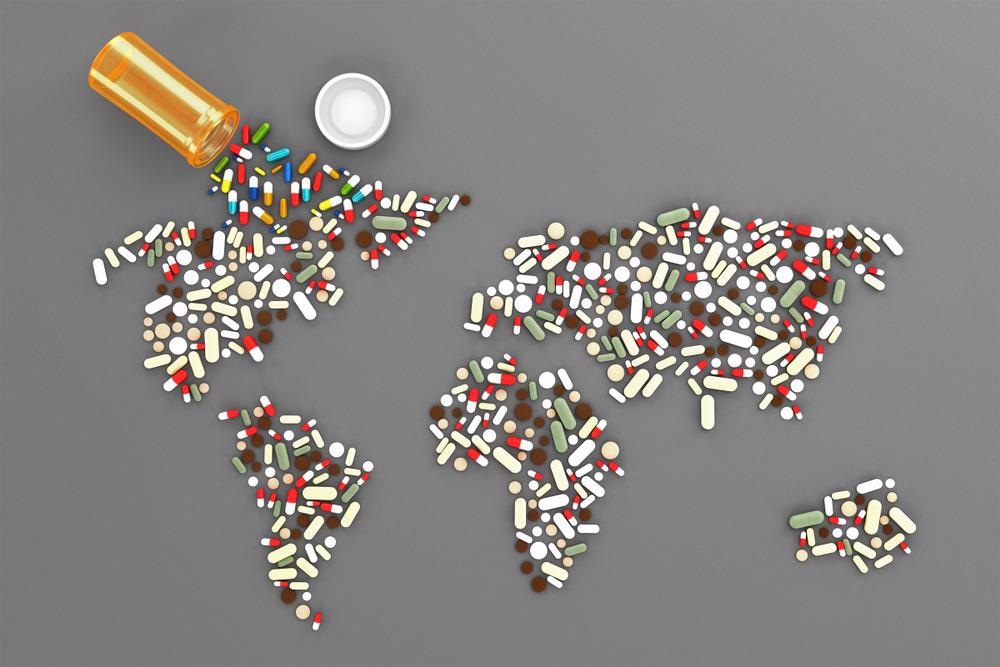R&D efficiency is most often expressed as the number of successful launches of a new product per period of time. In other words, output over the monetary investments required to produce said product (input).

Image Credit: Gorodenkoff/Shutterstock.com
According to the Center for Medicine Research International (CMR), the success rate from first toxicity doses to full-fledged FDA approval for the market is 4.9% for newly minted drugs. Though preclinical development successes hover around 69%, and discovery research successes are around 51%, the probability of all drugs' final technical and regulatory success is 4.1%.
The reasons for these turnover rates are many and comprise both positive and negative factors. By understanding these factors and acquiring a yearning for research refinement, the enrichment of R&D protocols and the efficiency of laboratory workings are well within reach.
How We Can Address the Issue of Progress
Suppose one concludes that 90% of all drugs fail over the course of clinical and exploratory research. In that case, this suggests that billions of dollars a year in research funding is fruitless and will bear no value to the community. This claim is evident when one looks at the mere 10-20 drugs annually introduced to the pharmaceutical industry. This shows that a reduction in attrition rates for new molecular entities (NME) is the most significant hurdle in pharmaceutical R&D.
Researchers should relate back to the source material regarding human genetics to alleviate this problem. Though this sounds axiomatic, we have not acquired the tools necessary to assay the human genome until now efficiently. Only until recently have approximately 5% of genes been approved for designer drug targets, which is not a significant number. We now know there is a much higher probability of success for drugs delineated and designed through human genetic evidence.
How Collaboration can Enrich Scientific Data
The phrase, two heads are better than one, rings true in the world of scientific research. By comparing data from multiple sources, we can better understand what methodologies and processes work better than others. Regeneron, for example, is among the largest and most successful biotechnology firms. They attribute quite a bit of their success to the collaborations they have worked with. These include global partnering companies like UK Biobank, Mayo Clinic, Penn Medicine, and more. Help and support from these firms have allowed for more than 500,000 sequenced exomes a year, which R&D can use to model new biomarkers and drug targets.
Some biotech firms are taking even grander steps in the name of communal data and inclusive distribution of results. Beginning in the financial crisis of 2007, mergers and acquisitions (M&A) have become more and more frequent in the biopharmaceutical sector. This is often performed as a buffer against revenue loss due to blockbuster patent expirations. It has also aided in stabilizing pharmaceutical companies by safeguarding intellectual property, developing new technology-based treatments, and filling in gaps within the R&D pipeline.
As of 2016, 50% of all R&D pipelines from globalized pharma companies were comprised of researchers and outsourced assets (not in-house). This helped extend the breadth of their portfolio, granting principal investigators access to other data streams and NMEs.
The true and most obvious way to enrich scientific data (at least in medicine and biotechnology) is to increase the number of new cost-effective medicines while circumventing an increase in R&D costs. However, it seems to be the case that R&D and industry productivity trends have waned in recent years. It is recommended that financial and intellectual fronts for any research-based company focus on the most critical stages in drug discovery.
Improving and hastening early clinical development and reducing the attrition rates in phases II and III are noted as the best paths for refining R&D efficiency.

Image Credit: ParamePrizma/Shutterstock.com
How China has Implemented a Collectivist Mentality to Enrich Scientific Data
China's pharmaceutical industry encompasses' 30% of the total pharmacological market cap and has continued to grow since establishing its 5-year plan of mergers and acquisitions amongst emerging sectors. This activity has led to an increase in productivity and competitiveness.
Data from Tassinari, M et al. provide evidence of China's growing pharmaceutical industry, with the annual growth rate rising from 20% to 26% between 2005 and 2013. Several M&As within a particular market sector have contributed to the increase of volatility and the declining security of that given sector. These M&As may also trigger future industry contractions, which may correct the market, and improve the efficiency of total R&D output.
Though M&As have proven to be one of the most valuable tools in enriching scientific data, they must be conducted at specified times when the market calls for it. Otherwise, unfortunate repercussions may occur within these research and development fields. If proper research and a strong foresight into the market's future are not readily available, operations may ensue in a "merging into monopolies." The resultant move could lead to a decrease in competition amongst industries, which will have the opposite effect of what we desire and decrease the value of scientific data.
Sources:
- Andrade G., Stafford E. (2004) Investigating the economic role of mergers. J. Corp. Financ.;10:1–36.
- Barbieri, E., Huang, M., Pi, S., & Tassinari, M. (2017). Restructuring the Production of Medicines: An Investigation on the Pharmaceutical Sector in China and the Role of Mergers and Acquisitions. International journal of environmental research and public health, 14(10), 1179.
- Schuhmacher A, Gassmann O, Hinder M. (2016). Changing R&D models in research-based pharmaceutical companies. J Transl Med;14(1):105.
- National Academies of Sciences. (2019). Improving Reproducibility and Replicability. National Academies Press (US) https://www.ncbi.nlm.nih.gov/books/NBK547525/
- Paul SM, Mytelka DS, Dunwiddie CT, Persinger CC, Munos BH, Lindborg SR, Schacht AL. (2010) How to improve R&D productivity: the pharmaceutical industry's grand challenge. Nat Rev Drug Discov. (3):203-14.
Further Reading
Last Updated: May 17, 2022